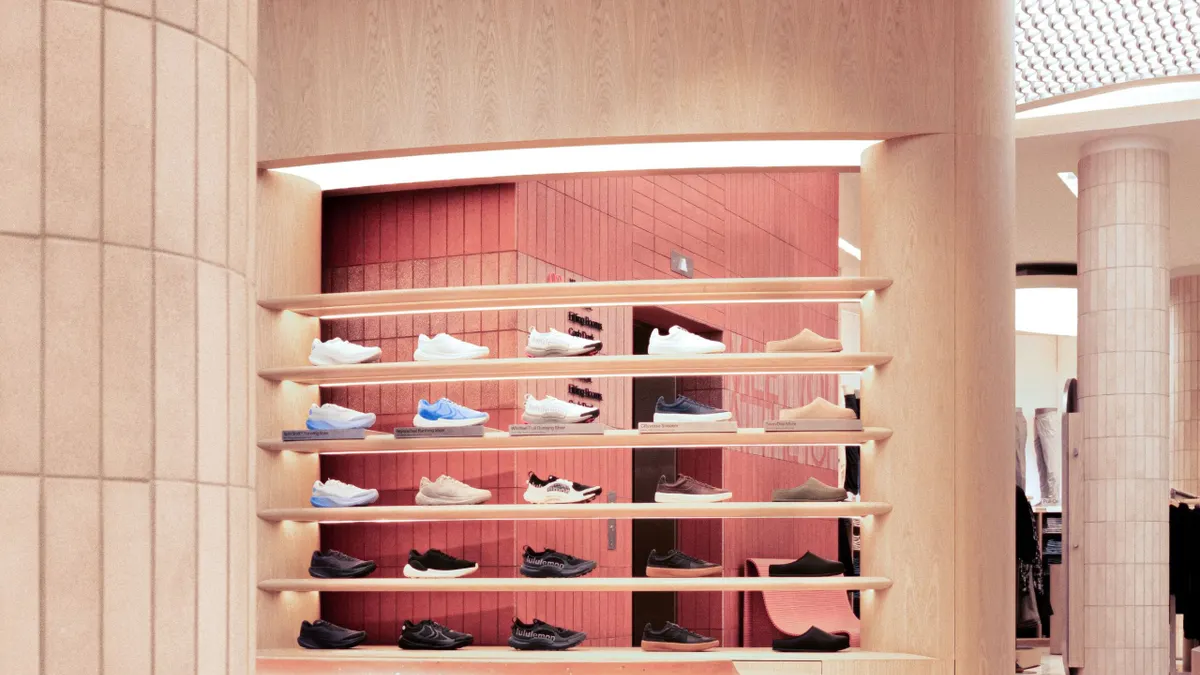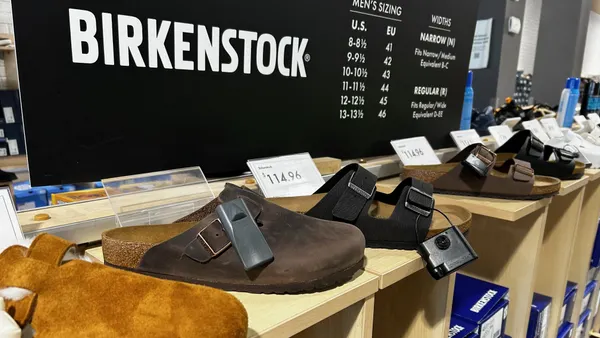Two months ago, what was set to be a thrilling and profitable “Pink Sunday” turned bloody for Target. Traffic overwhelmed the retailer’s mobile app, and its website crashed for more than 90 minutes during the pre-dawn launch of the hotly anticipated new Lilly Pulitzer collection.
“We missed the mark on Lilly [Pulitzer] because we relied on data that was less than six months old,” Jason Goldberger, president of Target.com and mobile for Target stores, said in a Wednesday keynote address that set the theme for the 2015 Internet Retailer Conference + Exhibition in Chicago. “Things had dramatically changed.”
In keeping with Moore’s Law, he noted, the rate of change is accelerating; just keeping up has become a challenge. And in the last three years, Target has done a (mostly) impressive job of meeting the needs of an evolving marketplace and experimenting with new retail strategies across channels to become a leader in the digital and physical spaces.
“You can’t attend a tech conference without hearing one speaker talk about the glory of failure — failing fast, failing forward, failing often,” Goldberger said of the Lilly Pulitzer episode. “This was failing publicly. If I can make one recommendation for you to take away from this conference, I’ll tell you to avoid it. It really sucks. But it is a good thing if it forces you to learn and makes you better. Target has come a long way in the past couple of years, but we’re still trying to figure things out."
Accelerating the rate of change
Target is not alone in trying to get a handle on a fast-moving, data-driven market. And while no company is going to get every answer right as the Internet of Things (IoT) begins to connect everything and everyone, said James McQuivey, vice president of research at Forrester Research, in his Thursday keynote, retailers should be prepared to meet change head-on as it increases by orders of magnitude.
The cost of innovation has gone down over the last decade, he said during “The Internet of Things Means a Consumer Information Tsunami: Get Ready to Ride The Wave.” As a result, consumers are embracing new technologies at a faster rate.
The day the Apple Watch was released, for example, Forrester asked people if they thought they would eventually own a smartwatch, and 26% said yes — most without ever having seen one in person. Some 8% of consumers polled also want a self-driving car, “and they don’t even exist yet,” McQuivey said. “This is a consumer base that’s learned the lesson of the last 10 years: New stuff is going to come, and I’d better get used to it. This is hyperadoption."
As IoT technologies begin to permeate everyday existence, consumers will generate more data than ever before, he added. “By 2020, the amount of data that consumers give off will be 100 times what you have today,” McQuivey said. “Today’s analytics are about pushing transactions. The next layer will be about understanding your customer: What are the behaviors, and how can we get in and participate in them?”
On the IRCE show floor, exhibitors showed off technologies designed to get the data generated online and in-store out of silos to streamline marketing and improve the customer experience. Silicon Valley-based Order Dynamics, for example, demonstrated a platform that merges data from inventory, marketing and point-of-sale systems to highlight missed opportunities, estimate their value, and suggest strategies to tap into them.
Consumers don’t care about channels
With consumers being the ultimate drivers of change, companies are finding out that the channels they use to define marketing activity no longer matter. Consumers don’t care where they make their purchases, as long as they get what they want, when they want it. Target has refocused its efforts in a customer-centric approach that Goldberger calls “guest-obsessed, not channel-obsessed.”
He pointed to "Game of Thrones" as an example of how channels mean little to the end user. HBO no longer reports viewership numbers on the night new episodes air because so many people now watch it on other devices and on their own schedules. “Can we even call it a TV show?” Goldberger asked. “The channel is totally irrelevant.
“This shift is happening across all media,” he added. “Millions of people are reading The New York Times without ever reading The New York Times. And it’s just as true in retail. If you buy a few items on your phone, but pick them up in-store later, is it a digital sale? Is it a store sale? Maybe a Web-influenced sale? The better question I hope you’re asking is, ‘Who cares?’”
This theme was echoed repeatedly at IRCE; progressive companies no longer perceive each channel as detracting from another. Increasingly, every touchpoint and every byte of data contributes to an all-encompassing network of connections that has the customer at its center.
“Consumers don’t think of it as ‘I shop on your website’ or ‘I shop in your store,” Jim Davidson, head of research for leading e-commerce platform provider Bronto, told Retail Dive. “If I want to buy from your brand, I want to buy from your brand. I’m going to bounce around from your physical store to your digital store; I’m going to look on my tablet and on my smartphone. Consumers just see that as shopping.”
Giving customers what they want
Target found that each channel can actually enhance results in the others. For example, the company made counterintuitive, cross-channel moves such as installing Wi-Fi in stores (once thought to encourage showrooming) and offering free shipping on online orders — both of which worked out in its favor. “There was a cost involved with free shipping, and we ate it,” Goldberger said. “But the economics of losing a guest to a competitor are decidedly worse.
“A guest is more valuable when they shop through more than one channel,” he added. “A guest that shops at Target in-store and on our digital platforms shops three times more often and spends three times more than in-store-only guests. Digital engagement does not take away from our stores. It creates a greater engagement with our brand.”
Target is also leveraging its physical assets, turning its more than 1,800 stores into local fulfillment centers and letting customers decide how to take delivery of their purchases. About 25% of digital orders are picked up or shipped from a store. The company is also testing curbside pickup—a service “rooted in guest empathy,” Goldberger said.
“Your toddler’s sick, you’re at the doctors office, you make your Target run from the waiting room, and pick it up on the way home without ever getting out of your car. Is Target missing an opportunity to bring that parent and her sick little kid into the store for an incremental impulse buy? Probably. But do we build deeper engagement and stronger loyalty? Absolutely.”
“I do think channels are going away,” Lisa Butler, vice president of enterprise solutions at eBay Enterprise, told Retail Dive. “When technology started evolving, they became channels because they were different. Now with the Internet of Things, everything is on the Internet, so it no longer matters. It’s all about the customer journey.”
“How you deal with channel management and how you put your guests first — these are universal things we are all dealing with,” Goldberger said. “If I leave you with anything, I leave you with this: Change is absolutely a constant. What you do with this one moment in time is entirely up to you.”





















